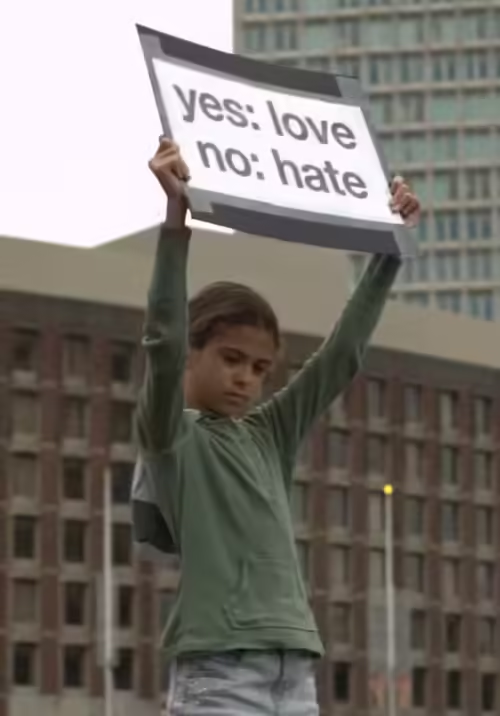It’s only fair to say up front that it seems Lynn Nottage is not for me. Two years ago Long Beach Playhouse staged her Intimate Apparel, a script that has its merits but struck me as meh overall. Now here’s Sweat, which, despite earning Nottage her second Pulitzer Prize, I like even less.
But even if I loved it, director Maisha Azadi Sebastiany’s numerous puzzling choices would have left me feeling that this production does not work.
It’s 2008, with America reeling from the economic collapse. Fresh out of prison and back in their hometown of Reading, Pennsylvania, Jason (Chase Payne) and Chris (Ja’lil Nelson) meet separately with their parole officer and refer obliquely to the incident that got them sent up the river. Flashback to early 2000, where we’ll be for most of the next two hours, experiencing the milieu and run-up to the tragic event.
The opinion of the Pulitzer Prize Board notwithstanding, one of the shortcomings of Nottage’s script is that it’s not really about Jason or Chris or any of its characters. Instead, this is a pure “issue” play, a (vague) statement about how macroeconomics leaves so many workaday folk behind. I come to theatre largely because I want to have an intimate experience with real flesh-and-blood (pretend) people; but Nottage’s characters never feel like anything more than representatives, cardboard cutouts of middle-class Rust Belt workers suffering the unintended consequences of NAFTA and good ol’ technological advancement.
It doesn’t help that Nottage isn’t great with dialog. I don’t know how many utterances of “You don’t know what it’s like” is too many, but Nottage goes way over the line.
However, the problem isn’t always Nottage, with the Playhouse cast often missing her obvious beats. On at least two occasions, for example, a character says “Don’t give me that look” without there having been any “look” or any space where the look could have occurred.
One of the most confounding aspects of Sebastiany’s staging was the blocking. I’ve seen plenty of shows where the actors cheat too much toward the audience, but never one in which so many awkward setups could be easily remedied by simply having an actor rotate 90 degrees or take a chair at a different side of the table. On top of that, performers often seem literally rooted to the floor just when every natural instinct should drive them to drift a bit.
Then there’s the problem with cigarette-smoking, of which there’s plenty. You don’t want to use herbal cigarettes (even though smoke would add atmosphere to Donna Fritsche’s fine rendering of a smalltown sports bar)? Okay. But how about at least pretending to light them? In the performance I saw this was done (poorly) on only two occasions; apparently every other cigarette was magically self-lighting. Suspension of disbelief is one thing, but….
This is in keeping with the fact that, based on what we see onstage, by the looks of it not only has none of the actors ever smoked, but it’s as if they and Sebastiany have never seen anyone do so. One actor ashed his cigarette so frequently and with such an exaggerated staccato (sometimes eight or nine inches above the ashtray) that it seemed to be a nervous tic. It would be strange to let this go even in rehearsal — but for it to survive into the run of the show?!
Equally awkward is the sound design. A relatively minor complaint is the music playing in the bar. Instead of eschewing the music entirely or setting the volume so it’s a real background element, it’s generally such a low whisper that it serves only as a distraction, as if sound from the downstairs Mainstage Theatre is leaking into the Studio Theatre.
But that’s nothing compared to an aspect of the brief newscast summaries that play in between scenes. It’s bizarre enough that almost every one of them begins not just with a needle-drop, as if the newscast is coming off an LP; but add to that the sound of a cassette or some sort being inserted into a machine, as if the crackle and hiss of stylus on vinyl is a sound made by tapes…. (Shakes head in bewilderment)
Surprisingly, the best thing about this show is Ja’lil Nelson, the understudy for the role of Chris who was forced to step in despite not being completely off-book. Although he carried the script with him throughout Act One, he never once needed to look at it and delivered his lines with conversational conviction. And while he was not as strong in Act Two, where he needed to regularly consult the script, he remained the most believable actor onstage.
It’s not like Long Beach Playhouse’s Sweat is the worst show I’ve ever seen. It’s not even the worst show I’ve seen this year. But between the Pulitzer win and the Playhouse’s production choices, I’ve never come away from a night of theatre more puzzled.
Sweat at Long Beach Playhouse
Times: Fri–Sat 8:00 p.m., Sun 2:00 p.m.
The show runs through August 17.
Cost: $20 to $30
Details: (562) 494-1014; LBplayhouse.org
Venue: Long Beach Playhouse, 5021 E. Anaheim St., Long Beach












